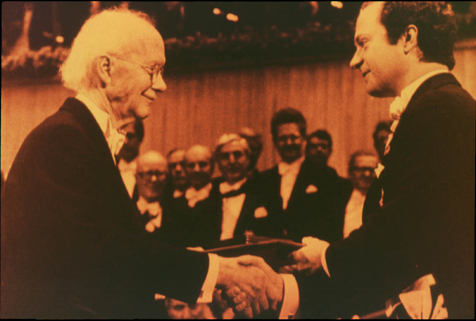
Faculty Research 1980 - 1989
Calcium-dependent cell adhesion molecules.
Document Type
Article
Publication Date
1989
Keywords
Calcium: ph, Cell-Adhesion, Cell-Adhesion-Molecules: ph, ul, Human, Models-Biological, Protein-Conformation, SUPPORT-NON-U-S-GOVT
First Page
892
Last Page
897
JAX Source
Curr Opin Cell Biol 1989 Oct;1(5):892-7
Abstract
The adhesive function of Ca2(+)-dependent CAMS has in the past been studied only indirectly, mainly using immunological techniques. The molecular cloning and information about the primary structure of several CAMs has been an important step in a more detailed molecular analysis. If there is a homophilic interaction between CAMs of neighbouring cells, an important question concerns the specificity of each CAM-mediated adhesiveness. Has each CAM a unique specificity and can this specificity be linked to a defined amino acid sequence? It will be important to elucidate the molecular mechanism of how each CAM interacts with the other. The experiments of Volk et al. (1987) suggest that an interaction of two different CAMs can occur. Since during development a given cell can express more than one CAM such an heterophilic interaction could play some regulatory role. Alternative splicing mechanisms or different protein forms during development or on different cell types have not yet been observed for Ca2(+)-dependent CAMs. However, uvomorulin is assumed to have a slightly different function during development and in adult tissues. During development uvomorulin is involved in the condensation, the pattern formation, and the sorting out of cells. In these processes the uvomorulin-mediated adhesiveness should be controlled, since cells reorganize and migrate during development. For the maintenance of the histoarchitecture in adult tissues uvomorulin might act more as a glue. This argues for the existence of mechanisms to regulate the strength of adhesiveness, and the cytoplasmic domain might be involved in these processes. The association of the cytoplasmic domain of uvomorulin with catenins could be an important observation in this respect.(ABSTRACT TRUNCATED AT 250 WORDS)
Recommended Citation
Kemler R,
Ozawa M,
Ringwald M.
Calcium-dependent cell adhesion molecules. Curr Opin Cell Biol 1989 Oct;1(5):892-7

